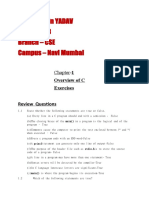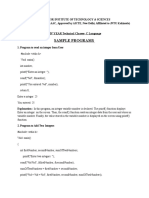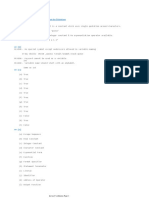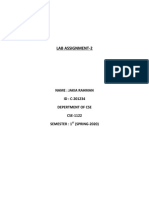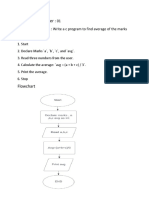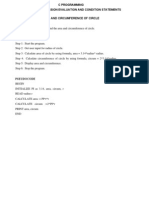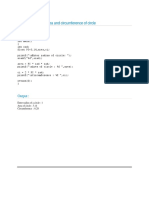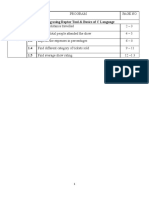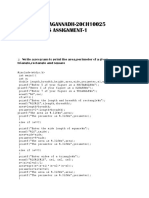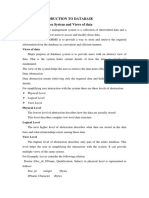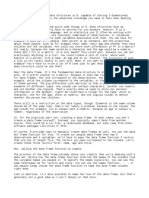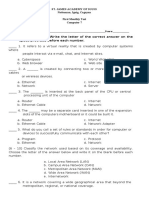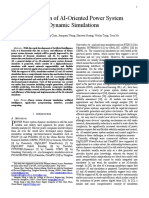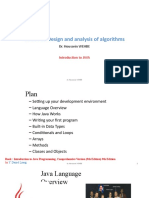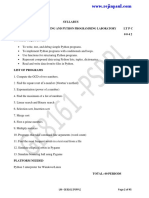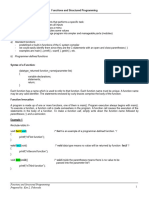0% found this document useful (0 votes)
6 views20 pagesEee Assignment
The document outlines various C programming exercises, including basic text display, addition, multiplication, area calculations, and temperature conversions. Each program includes objectives, code snippets, outputs, flowcharts, discussions, and conclusions, emphasizing user input handling and mathematical operations. The exercises serve as practical applications for learning fundamental programming concepts in C.
Uploaded by
u1902129Copyright
© © All Rights Reserved
We take content rights seriously. If you suspect this is your content, claim it here.
Available Formats
Download as PDF, TXT or read online on Scribd
0% found this document useful (0 votes)
6 views20 pagesEee Assignment
The document outlines various C programming exercises, including basic text display, addition, multiplication, area calculations, and temperature conversions. Each program includes objectives, code snippets, outputs, flowcharts, discussions, and conclusions, emphasizing user input handling and mathematical operations. The exercises serve as practical applications for learning fundamental programming concepts in C.
Uploaded by
u1902129Copyright
© © All Rights Reserved
We take content rights seriously. If you suspect this is your content, claim it here.
Available Formats
Download as PDF, TXT or read online on Scribd
/ 20













